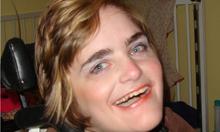Expand Eligibility for the State Children’s Health Insurance Program (CHIP)
The Children’s Health Insurance Program (CHIP) program, financed jointly by the federal government and individual states and administered by the states, has insured over 7 and a half million otherwise uninsured children as of 2009.[1]Of the almost five million children enrolled in CHIP[2], a significant proportion (17% to 25% in studies done from 1999 to 2002) are estimated to be CYSHCN.[3] Under the Children’s Health Insurance Program Reauthorization Act of 2009 (CHIPRA), states can now offer health insurance coverage to uninsured children in families with incomes above 200% of the federal poverty level (FPL) without facing major penalties. The federal government pays an enhanced matching rate for children in families up to 300% of the FPL and the Medicaid matching rate for children in families over 300% of the FPL. Across states, CHIP eligibility levels range between 160% and 400% of the FPL, with 37 states with income eligibility levels over 200% of FPL.
For example, New Jersey operates a CHIP program called New Jersey Family Care for children in families whose income is up to 350% of the FPL. Premiums are required for those over 200% of the FPL, with a maximum premium rate of $133 per family, per month. At 350% of the FPL, the income eligibility ceiling for New Jersey Family Care is higher than the ceiling for most CHIP programs.
The Patient Protection and Affordable Care Act of 2010 (ACA) contains provisions to strengthen coverage for children under CHIP, including requirements to conduct outreach and enrollment of vulnerable populations including CYSHCN. (View policy paper: Affordable Care Act and Children with Special Health Care Needs)
[1] National Survey of Children with Special Health Care Needs. NS-CSHCN 2005/06. Data query from the Child and Adolescent Health Measurement Initiative, Data Resource Center for Child and Adolescent Health website. Retrieved January 26, 2011 from http://www.childhealthdata.org.
[2] Smith V, Roberts D, Rousseau D and Schwartz T. CHIP Enrollment June 2009: An Update on Current Enrollment and Policy Directions. Kaiser Commission on Medicaid and the Uninsured; The Henry J Kaiser Family Foundation; April 2010. http://www.kff.org/medicaid/upload/7642-04.pdf
[3] VanLandeghem K and Brach C. What has been learned about expanding children’s health insurance? Highlights from CHIRI™. CHIRI™ Issue Brief No. 10. Rockville, MD: Agency for Healthcare Research and Quality; September 2009. AHRQ Pub. No. 09-0034. http://www.ahrq.gov/chiri/chiribrf10/chiribrf10.pdf.
![]() Printable version of table (PDF)
Printable version of table (PDF)
Income Eligibility Levels for Children’s Separate CHIP Programs by Annual Incomes and as a Percent of the Federal Poverty Level, 2011
|
* In the above table, asterisks indicate states which do not have a separate CHIP program. Income eligibility levels as a percent of the Federal Poverty Level (FPL) for states with a Children’s Medicaid/CHIP Expansion Program can be accessed here.
- Arizona instituted an enrollment freeze in its CHIP program, KidsCare, on December 21, 2009. The program remains closed to new applicants.
- Infants born to mothers in California’s Access for Infants and Mothers (AIM) program are automatically enrolled in CHIP. The income guideline for these infants, through their second birthday, is 300% of the FPL.
- Colorado increased eligibility from 205% to 250% of the FPL on May 1, 2010. The state has also passed legislation authorizing coverage of lawfully residing immigrant children, but has not provided funding for the expansion.
- Connecticut, Florida, Illinois, Maine, Minnesota, New Hampshire, New Jersey, New York, North Carolina, Ohio, Oregon, Pennsylvania, Tennessee, and Wisconsin allow families with incomes above the levels shown buy into Medicaid/CHIP. See Table 2 (available at the data source link) for income eligibility guidelines and premiums for these buy-in programs.
- Florida operates three CHIP-funded separate programs. Healthy Kids covers children ages 5 through 19, as well as younger siblings in some locations. MediKids covers children ages 1 through 4. The Children’s Medical Service Network serves children with special health care needs from birth through age 18.
- Illinois provides state-financed coverage to children with incomes above CHIP levels. Eligibility is shown in parentheses.
- Kansas increased eligibility from 200% to 250% of the 2008 FPL (approximately 241% of the 2009 FPL) on January 1, 2010.
- In Massachusetts, children at any income are eligible for more limited state-subsidized coverage under the state’s Children’s Medical Security Plan; premiums are charged on a sliding scale based on income.
- Oregon increased eligibility from 200% to 300% of the FPL on February 1, 2010.
- South Carolina converted its separate CHIP program to a Medicaid expansion in October 2010.
- Tennessee reopened its separate CHIP program (CoverKids) to new applicants on March 1, 2010.
- In Vermont, Title XIX funding covers uninsured children in families with income at or below 225% of the FPL; uninsured children in families with income between 226% and 300% of the FPL are covered via Title XXI funding under a separate CHIP program. Underinsured children are covered in Medicaid through Title XIX funding up to 300% of the FPL.
Source
The Henry J. Kaiser Family Foundation (2011). Income Eligibility Levels for Children’s Separate SCHIP Programs by Annual Incomes and as a Percent of Federal Poverty Level, 2011. Retrieved March 4, 2011 from http://www.statehealthfacts.org/comparemaptable.jsp?ind=204&cat=4.
Additional Resources
- Financing the Special Health Care Needs of Children in Foster Care: A Primer
- Risk Adjustment and Other Financial Protections for Children with Special Health Care Needs in Our Evolving Health Care System
- Public Insurance Programs and Children with Special Health Care Needs: A Tutorial on the Basics of Medicaid and the Children's Health Insurance Program (CHIP)
- The Massachusetts Child Psychiatry Access Project: Combining Innovation and Collaboration to Enhance Children's Mental Health Services in the Primary Care Setting [PDF]
- Dancing with Data: Using data to support your message
- Video: Bridging the gaps for families of children with special health care needs: RI Pediatric Practice Enhancement Project
- Just the Facts: The 411 on Health Insurance for Young Adults Ages 18 - 30 in Florida

